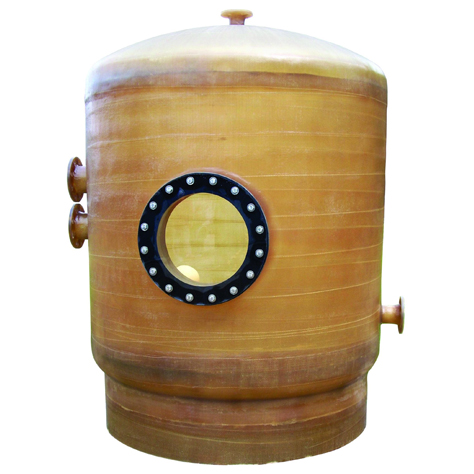
Surge tanks are generally required on gutter pools to allow a “storage” space (surge capacity) for water displaced by swimmers. The preferred arrangement is to hold-back (modulate) the water from the main drain pipe so that water entering the gutters can flow to the surge tank and not back-up in the pool. This is done with a float ball control on a butterfly type modulating valve, mounted on the main drain line. Modulating the main drain line ensures that the debris that normally accumulates on the surface of the pool will be swept quickly to the filters. The surge tank is a closed top tank and must be vented to a point above pool water level.


